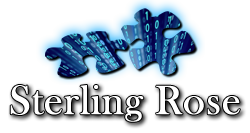As we were writing this issue of Technology Update, tariffs hit the fan. We have discussed their possible impact on prices before, but that was hypothetical. Now, they’re real, but we’re still not sure where they will land and how they will affect supplies and prices. At the same time, technological advances make hardware obsolete faster.
Before tariffs were officially announced, we saw a 10 percent minimum increase in hardware prices. Now, nobody is betting on how long the tariffs will stay in effect and for how long. Anyone who’s been living on the bleeding edge of their hardware’s service life – and there are many – has to feel uncomfortable because there is uncertainty supplies, prices and delivery dates.
That discomfort is heightened by a crunch from software providers, who need to meet demands for better online security and performance from operating systems and applications. It used to be that in some cases, you could expect seven years of service from a piece of equipment. That’s because the hardware manufacturers could provide updates for their products’ firmware (hardware operating system software) to keep pace with software developments.
Today, hardware can become obsolete in as little as three years. Security systems, working in the cloud, and higher-performing application software all demand more powerful equipment. The technology industry has made a business decision to put its resources into supporting the larger base of forward-moving customers than those who are trying to hang on to older systems.
For some organizations, it’s a double-edged sword. They find it’s especially critical to be lean and mean to survive in tougher economic conditions. But they can’t cut away too much meat after they’ve trimmed all the fat. At some point, they’ll need to buy new hardware regardless of the price.
The best way to work around a double-edged sword is to see what hardware is connected to the internet. That’s a security move. Hackers look for the weakest link in any system, and if you have any hardware that’s connected to the internet, it must be able to handle the latest security software.
When one of our retail clients ordered 10 new computers, we saw one old computer just running ads on a TV in their store. It was not connected to the internet, and that was a perfectly good use for it. You may have equipment in your office that’s not connected to the internet – or can be used without an internet connection.
We can help you make more efficient use of your hardware by taking a close look at what equipment you have to determine what needs to be replaced and what can be used in other ways. Call us – 973-433-6676 – or email us to set up an appointment.
